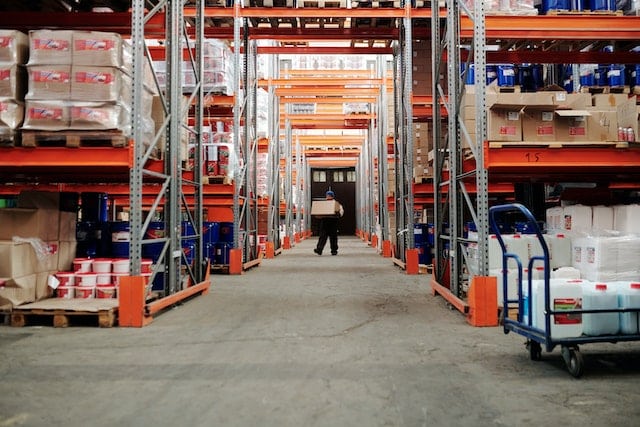5 Ways to Minimize Maintenance Disruption on Retail Operations

Regular maintenance of buildings, equipment, and technology used in retail operations is essential to keep things running smoothly but also has the potential to disrupt day-to-day aspects of the business. A parade of contractors with bulky equipment may not exactly be the brand image a store wants to portray to customers in the front of the house. The back of the house can run into issues too if maintenance projects run into budget overages for unaccounted maintenance costs, result in an inability to implement or care for assets properly, or disrupt customer flows.
Without the proper technology, planning, and implementation, managing regular maintenance can be fraught with pitfalls such as longer work order times, unacceptable invoice processing, and no way to use data and analytics to improve the process. Footwear specialist Cole Haan dealt with many of these issues and many more before it implemented maintenance management software to modernize its facilities operations.

Fortunately, there are several strategies that allow business managers and owners to streamline maintenance so it enhances retail operations instead of slowing it down. Let’s dive in:
1. Build in Automation
By automating as much of the maintenance process as possible, businesses are able to make more informed decisions, identify needs, and even find issues before they occur.
When you couple IoT-enabled equipment with a Service Automation platform, facilities managers can accelerate response times and leverage data analytics better. This combination of technology is able to detect failures and abnormal results in real-time and automatically submit a work order or schedule a technician visit.
With this capability, minor issues are detected long before human intervention or inspection could. Even when manual inspections are scheduled, human error leads to a host of additional issues, like overdue inspections, missed problems, or inadequate data analysis and reporting.
When luxury goods retailer Fendi started using facilities management software to automate the maintenance process, they eliminated 95% of critical issues, reduced reaction time to issues by 88%, and slashed facility management invoice processing time by 95%.
2. Take Advantage of Analytics
By looking at the current and past performance of facility systems, store and facilities managers are better able to determine the best times for required maintenance to minimize disruption. For instance, if sales data shows store foot traffic is slowest on Sundays, you should hire a contractor on that day to complete a maintenance work order.
Historical data can even make this more specific: long-term trends show a lag in sales on Sunday afternoon. This means closing the business early Sunday for a plumbing or lighting repair is unlikely to impact overall sales volume and chase away customers.
3. Schedule Preventive Maintenance
A stitch in time saves nine. That is true with preventative maintenance, which can extend the working life of your equipment and reduces the likelihood of total breakdowns. There is no question that the cost of downtime at a store outweighs any cost of on-going preventative maintenance by keeping everything running smoothly for longer. In fact, using technology to schedule maintenance can reduce maintenance spend by 30% or more, as this global retailer found.
Simply ignoring the problem is certainly not a good option, as you’ll have to deal with more significant costs, such as part replacements, total mechanical failure, or a system error that may take days (or even weeks!) to fix. This has a serious impact on your customer experience. Let’s say your HVAC machine breaks down in the middle of August. Even a couple of days in the sweltering heat can deter customers from shopping and severely impact store revenue.
4. Hire the Best Contractors
The best salespeople generate more revenue and help create a better brand experience for customers in their stores. That’s the same in the facilities contractor world, where the best contractors tend to get the job done right the first time, meaning less downtime and higher quality work. This is especially crucial for a luxury brand, as customers expect brand consistency and elaborate display quality.
In addition to finding contractors who produce high-quality work, it’s important to also make sure their availability is flexible enough to work during the off hours of the retail business. This may include nights and weekends when the business is closed to employees and customers. Once a retail operations manager has secured a list of reliable contractors, facilities management software can automatically create and schedule work orders and send invoices. This allows retail managers to focus on high-priority projects and, most importantly, their customers:
When luxury retailer Louis Vuitton implemented technology to help them manage contractors and work orders across all locations, they reduced the time to initiate a work order and route it to an approved vendor to less than 90 seconds, compared to the old method of stores having to find and call a vendor. As a result, this reduced the time store managers and employees spent on FM issues by 96% (from 25% of their daily time to less than 1%).
5. Visibility Into Spend & Other Trends
Solutions such as ServiceChannel helps store managers easily track repair and maintenance spending over time for all work orders placed. This helps stores better predict how maintenance impacts budget and how much budget needs to be allocated for maintenance needs.
The data also forecasts the months, days, and time when maintenance activity is high. This is critical for planning employee schedules, hours of operation, and/or promotional campaigns. Here’s an example: say your building is older, and data shows your plumbing equipment starts to act up in the deep winter. You are better suited to schedule your yearly store-wide blowout during March or April instead of February to avoid problems and ensure maximum sales.
Final Thoughts
Proper retail facilities management includes a lot of moving parts, and regular maintenance of technology and systems can help managers complete tasks automatically, aided by the use of a central facilities management dashboard.
Managers should especially take advantage of the ability to automate work order creation, send alerts before failures occur, and analyze data to make data-backed decisions about maintenance activity. This allows retail managers and business owners the ability to focus on what is most important in the business: their customers’ satisfaction and experience.




